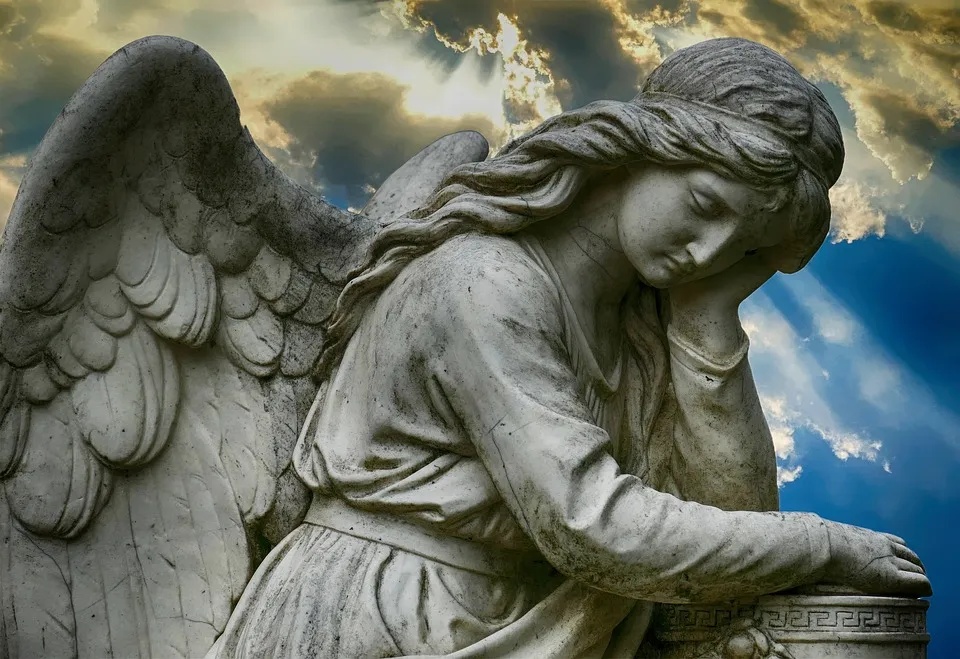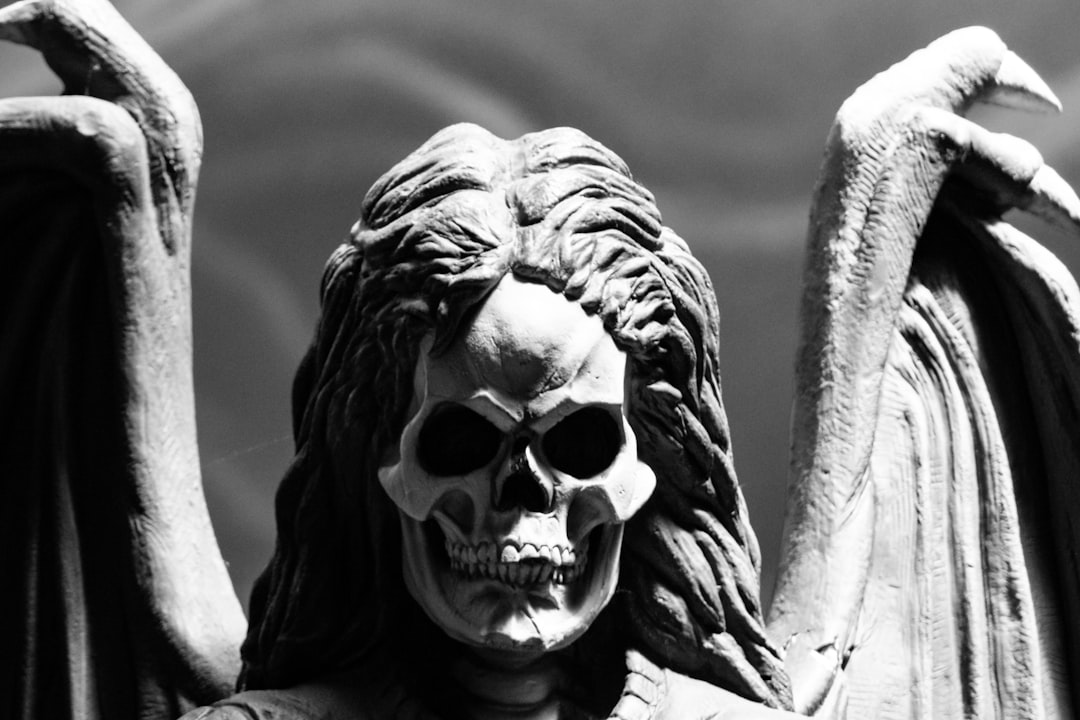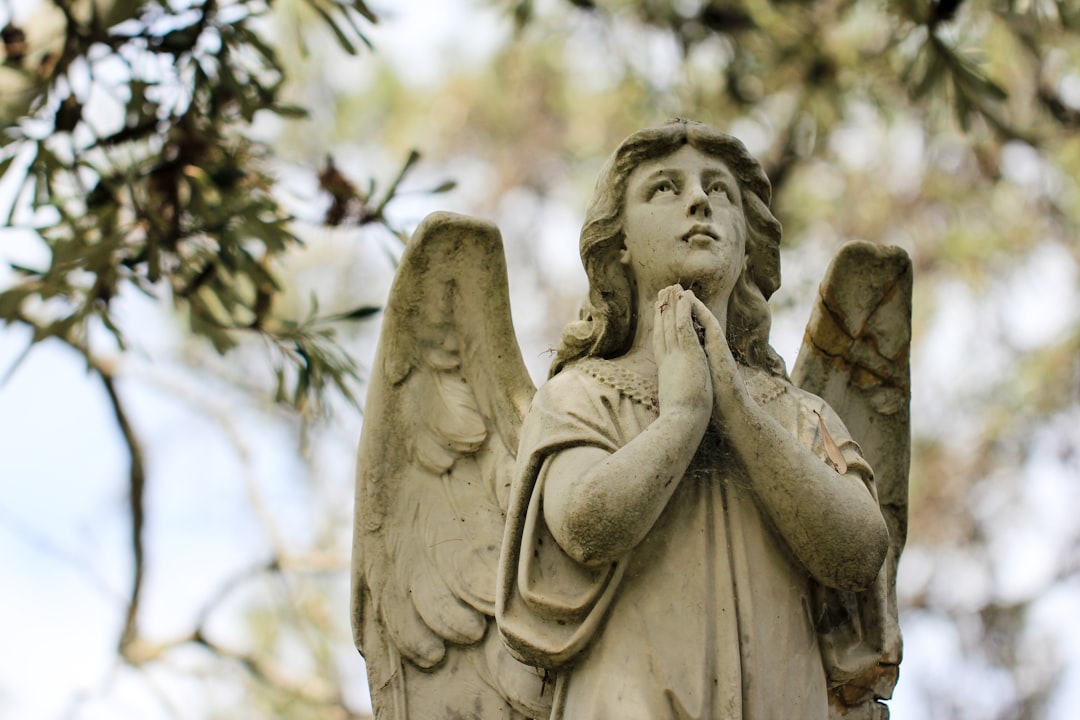The concept of death has fascinated humanity throughout history, resulting in myths, legends, and cultural beliefs surrounding the Angel of Death. This post explores these beliefs from a cross-cultural perspective, including the personification of death in Western cultures, psychopomps in different religions, and art’s portrayal of this intriguing figure. Join us to unveil folklore, superstitions, and more about the Angel of Death and read until the end for a deeper understanding of this final truth.
The Angel of Death: A Cross-Cultural Phenomenon

Have you ever wondered if there is such a thing as the Angel of Death? The idea of a spiritual being that guides our souls to the afterlife has been a part of human beliefs and traditions for centuries. In fact, this concept is widespread among different cultures and religions. Here are some interesting facts about the Angel of Death:
-
The Grim Reaper and Death Personification in Western Cultures
In Western cultures, death is often portrayed as a terrifying figure, known as the Grim Reaper. This dark angel has become a symbol of the end of life, and his presence is often associated with pain and suffering. However, the Grim Reaper is not the only representation of death in Western cultures. Many artists and writers have personified death in different ways throughout history, creating a wide range of interpretations and meanings. -
Psychopomps: Angels of Death in Different Religions and Mythologies
The idea of a psychopomp, a spiritual guide that accompanies the soul to the afterlife, is present in many religions and mythologies. For example, in ancient Egyptian mythology, Anubis was the god of the dead, who guided the souls to the underworld. In Greek mythology, Charon was the ferryman of Hades, who transported the souls across the river Styx. In Christian tradition, angels are often portrayed as psychopomps, such as Michael, who is tasked with escorting the souls to heaven. -
Death and the Afterlife: Existence or Oblivion?
One of the most debated topics surrounding death is the existence of an afterlife. While some people believe that there is a spiritual realm where our souls go after we die, others argue that death is the end of our existence and that there is no afterlife. This philosophical and spiritual question has led to many different beliefs and traditions across cultures. -
Folklore and Superstitions Surrounding Death
Folklore and superstitions surrounding death are prevalent in many cultures. For example, in some cultures, it is believed that a black cat crossing your path is a bad omen that predicts death. Similarly, breaking a mirror is seen as a sign of bad luck that can bring death. These superstitions are often passed down from generation to generation and reflect the fear and uncertainty that surrounds death. -
Death in Art: Personification and Symbolism
Throughout history, artists have created many different interpretations of death through their work. From Van Gogh’s “Skull with Burning Cigarette” to Salvador Dali’s “The Persistence of Memory”, death has been portrayed in countless ways in art. These depictions often use powerful symbolism to convey the mystery and inevitability of death.
In conclusion, the concept of the Angel of Death is a cross-cultural phenomenon that has been present in human beliefs and traditions for centuries. Whether we see death as a spiritual guide or a dark angel, it is a universal experience that connects us all. By understanding the different cultural beliefs and interpretations of death, we can gain a deeper appreciation for the mystery of life and the afterlife.

The Grim Reaper and Death Personification in Western Cultures
In popular culture, the figure of the Grim Reaper is often used to symbolize death. The hooded figure with a scythe in hand is a staple of Halloween costumes and horror films. But where did this image come from?
In Western cultures, death has often been personified in various forms. In ancient Greek mythology, the god Thanatos was the personification of death. In the Middle Ages, the Dance of Death was a popular motif in art and literature depicting death as a skeleton or person in a shroud leading a procession of people from all walks of life to their graves. The Grim Reaper as we know it today became a popular image during the 14th century, when the bubonic plague ravaged Europe. The Grim Reaper was often depicted as a skeleton wielding a scythe, a tool used for harvesting crops, which served as a reminder that death is a natural part of the cycle of life.
In Christianity, death is personified as the Angel of Death, who is sent by God to take the souls of the departed to their final destination. The Bible also speaks of the four horsemen of the Apocalypse, one of whom is Death riding a pale horse. These personifications serve as a reminder of the fragility of life and the inevitability of death.
Despite the prevalence of death personification in Western cultures, it is important to remember that death is not something to be feared. As Christians, we believe that death is simply a transition from earthly life to eternal life with God. It is a natural part of the cycle of life, and we can find comfort in knowing that our loved ones who have gone before us are now in a place of peace and rest.
While the Grim Reaper and other death personifications can be frightening, it is important to remember that they are simply symbols of a much larger concept. Death is a part of life, and it is up to us to embrace it with grace and trust in the promise of eternal life.
Psychopomps: Angels of Death in Different Religions and Mythologies
In different religions and cultures, angels of death are believed to escort souls to the afterlife. These beings are commonly known as psychopomps and often depicted as figures with wings. Although death is usually seen as a dark and terrifying concept, psychopomps are usually portrayed as friendly guides who help transition the soul to the afterlife. Here are some examples of psychopomps from different cultures:
-
Anubis (Egyptian mythology): Anubis was the jackal-headed god who helped mummify and protect the dead. He was also believed to be the guide of souls to the afterlife.
-
Azrael (Islamic mythology): Azrael is sometimes called the Angel of Death in Islamic mythology and is responsible for separating the soul from the body. He is also believed to help people at the time of death by easing their pain and suffering.
-
Charon (Greek mythology): Charon was the ferryman who transported the souls of the dead across the river Styx to the underworld. He was often depicted as a grumpy old man who demanded payment in order to ferry the dead.
-
Valkyries (Norse mythology): In Norse mythology, the Valkyries were female warriors who chose who would die in battle and then escorted the bravest of warriors to Valhalla, the Norse afterlife.
-
Shinigami (Japanese mythology): Shinigami are spirits who come to collect the souls of the dying. They are often depicted as dark, grim beings with skeletal features.
Although these entities have different names and forms, they all serve the same purpose – helping the soul transition from the mortal world to the afterlife. In many cultures, they are seen as benevolent beings who offer comfort and a sense of peace during the dying process.
Death and the Afterlife: Existence or Oblivion?
Death is an inevitable part of the human experience. While some people view it as the natural end of a physical existence, others see it as the beginning of a new, supernatural one. Across cultures and religions, there are many different beliefs about what happens after we die. Some people believe that there is an angel of death, a psychopomp who escorts the soul to its final resting place. Others believe that death is the end of consciousness, leading to a state of eternal oblivion.
One of the most widely held beliefs about the afterlife centers on the idea of heaven and hell. In Christianity, those who have accepted Jesus Christ as their savior are believed to go to heaven, where they will live eternally in the presence of God. Those who do not accept Jesus as their savior are said to go to hell, an eternal place of suffering and separation from God. This belief in the afterlife provides comfort and hope to many believers, who see death as a transition into a better existence.

However, not all religions believe in a heaven and hell. In Hinduism, for example, the afterlife is seen as a cycle of rebirth. After death, the soul is reborn into another body based on its karma, or the sum of the good and bad deeds done in the previous life. The ultimate goal is to achieve moksha, a state of liberation from this cycle of birth, death, and rebirth. In Buddhism, the concept of reincarnation is also important, but the ultimate goal is to achieve enlightenment and escape the cycle of rebirth altogether.
Beyond religion, there are also many secular beliefs about death and the afterlife. Some people believe that death is simply the end of consciousness, and that there is nothing beyond it. Others believe in the possibility of an afterlife, but without any specific religious beliefs. For these individuals, the afterlife may be seen as a continuation of consciousness, or as a state of being beyond physical existence.
Regardless of one’s beliefs about the afterlife, death is an important and often difficult topic to confront. For many people, the prospect of death raises questions about the purpose of life, the nature of existence, and what happens after we die. Whether or not we believe in an angel of death, the concept of mortality is universal, and it is something that we all must face at some point in our lives.
Folklore and Superstitions Surrounding Death
Folklore and superstitions surrounding death have been around for centuries and are prevalent across many cultures. Many of these beliefs involve supernatural entities and spirits that are associated with the dying process or the afterlife. Here are some common beliefs:
-
The Soul Leaving the Body: In some cultures, it is believed that the soul leaves the body at the moment of death. It is said that the soul hovers over the body, waiting for the moment it can depart and move on to the afterlife. This belief is shared in many cultures, including Christianity.
-
Death Omens: Many cultures have beliefs surrounding omens that foretell death. For example, some believe that the presence of an owl outside a person’s window or the sound of a dog howling can signal an impending death. Others believe that seeing a single magpie or a bat flying around the house can also be bad omens.
-
Deathbed Rituals: In some cultures, certain rituals are performed at a person’s deathbed to ensure the smooth transition of the soul into the afterlife. For instance, it is common in some Christian traditions to recite prayers or hymns and light candles.
-
Burial Customs: Different cultures have different customs when it comes to the burial of the dead. For example, in some cultures, it is believed that the dead must be buried facing east so that they can face the rising sun in the afterlife. Other cultures require the family to leave food or gifts with the deceased to ensure a good afterlife.
-
Death Portrayed in Folklore: Death is often portrayed in folklore as a supernatural being that symbolizes the end of life. In many cultures, death is personified as a “grim reaper,” a hooded figure carrying a scythe who comes to take the soul of the departing person.
Beliefs surrounding death vary widely across cultures and religions. Many of these beliefs have been passed down from generation to generation and are deeply ingrained in the beliefs of people. While some may see these beliefs as mere superstitions, they can provide comfort and peace in times of grief and fear of the unknown.
« Understanding the Role of a Reviler in Christianity
Understanding the Significance of the Triumphal Entry in the Easter Story »
Overall, understanding the folklore and superstitions surrounding death can provide insight into the beliefs and traditions of different cultures.
Death in Art: Personification and Symbolism
Art has always been a medium to express deep-seated emotions, beliefs, and messages. Death is no exception to this phenomenon as it has been personified and symbolized in various forms of art throughout the ages. The visual representation of death has varied across different cultures and eras, depicting the range of emotions and beliefs that accompany it.
In some cultures, the personification of death is depicted as a skeletal figure known as the Grim Reaper. An iconic figure in Western culture, the Grim Reaper is often depicted wearing a black cloak and carrying a scythe, symbolizing the end of life. In contrast, other cultures personify death as a comforting angelic figure or a nurturing mother, emphasizing the belief that death is not the end of life but the beginning of a new journey.
Artists have also used various symbols, motifs, and metaphors to represent the concept of death. For instance, the butterfly is a popular symbol of transformation and resurrection that has been used to depict the belief in life after death. Similarly, the hourglass is a common symbol of life’s transience, highlighting the fleeting nature of existence.

Death has been personified and symbolized in various forms of art such as literature, paintings, sculpture, and photography. One classic example is the poem “Because I could not stop for Death” by Emily Dickinson, which depicts death as a gentle and patient suitor. Meanwhile, the famous painting “The Death of Marat” by Jacques-Louis David portrays death as a violent and tragic event.
In Christian art, death is often depicted in the form of martyrs, Jesus Christ himself or the Four Horsemen of the Apocalypse. These representations serve as a reminder of the temporary nature of earthly life and the ultimate triumph of the Divine.
In conclusion, the representation of death in art is a testament to the wide range of beliefs and emotions associated with it. Although death is often portrayed as a grim and fatal event, artists also use it as a symbol of transformation, renewal, and hope. Despite our varied cultural beliefs about death, art can provide us with a common ground of reflection and contemplation about the final truth of our existence.
The Final Truth: Exploring the Concept of Death
It’s a topic that many people shy away from discussing, but it’s inevitable for all of us: death.
In Christianity, death is viewed as a transition into the afterlife. It’s believed that after we die, we will either ascend to heaven or descend to hell, depending on our relationship with God. This belief is rooted in the Bible, which speaks of eternal life and resurrection.

But what about those who don’t believe in an afterlife? For some, death is simply the end of existence. They believe that once the body dies, there is no consciousness or soul left behind. This perspective is often associated with atheism and agnosticism.
Regardless of personal belief, death is often seen as a mysterious and even frightening concept. It’s something that we can’t fully comprehend or control. It’s also a topic that has been explored and personified in various ways throughout history and across cultures.
Here are some interesting facts and ideas about death across cultures and religions:
- In ancient Egyptian mythology, the god Anubis was the guardian of the dead and the god responsible for guiding the soul to the afterlife.
- Hinduism and Buddhism both believe in the cycle of rebirth and the idea of karma, which dictates one’s next life based on their actions in this one.
- In Japanese folklore, shinigami are supernatural beings that are said to bring death to those whose time has come.
- In Mexican culture, the Day of the Dead is a celebration of life, death, and the afterlife. It’s believed that the dead return to visit their loved ones on this day and enjoy offerings of food and drink.
- In Christian art and tradition, death is often personified as the Grim Reaper, a cloaked figure carrying a scythe. This image is meant to symbolize the idea that death is a natural part of life and that all must face it eventually.
As Christians, we believe that death is not something to be feared but rather to be embraced as a transition into a new and eternal life with God. It’s an opportunity for us to let go of our earthly attachments and to focus on our spiritual well-being.
In the end, the concept of death is something that we will all face differently. Whether we view it as the end or a new beginning, it’s important to acknowledge its significance and to embrace the mystery and beauty of life’s final journey.












